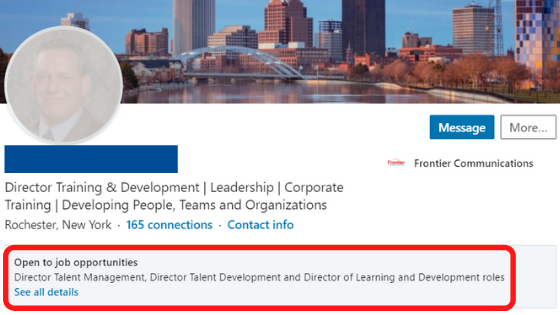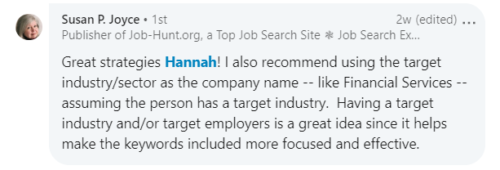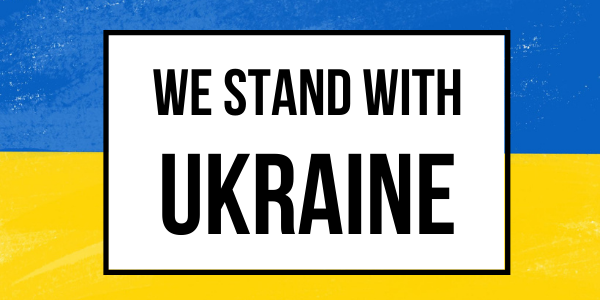Title:3 Options To Update Your LinkedIn Job Title and Employer When Unemployed
Author:Hannah Morgan
Date:July 2020
Source:Career Sherpa - Reprinted with permission
There are several options for listing your LinkedIn job title and employer when unemployed. Your goal is to highlight your qualifications without drawing attention to the fact that you aren't working.
If you've recently been laid off, what do you do to your LinkedIn profile?
There are several options for how to list your current LinkedIn job title and employer when unemployed.
Why It Matters
You want to maximize the "findability" of your LinkedIn profile. And without a current job listed, you're profile is not reaching LinkedIn's All Star rating.
Not listing a current job can negatively impact how your profile is ranked in search results within LinkedIn. But even more importantly, if you don't list a current job, everyone knows you are not working. And that raises more questions. (Sadly, there is still a negative bias against the unemployed.)
Recruiters using LinkedIn's recruiting tools to search for candidates won't be impacted by LinkedIn's algorithm. However, a recruiter will question why you left your last job instead of focusing on your qualifications.
Luckily, there are several work arounds for savvy job seekers. Here they are.
Option 1: DO NOT change the end date
After you've been laid off, do not change your current employer end date to reflect the position ended. At least for several months. (There's no hard and fast rule on how long you can ethically get away with not changing the end date.)
By all means, select that you are open to new opportunities so anyone looking at your profile can see this.

To learn more about turning on LinkedIn's "Open Candidate" feature, read this by LinkedIn.
Here's my logic:
First, by not changing it, you won't have to worry about how to invent a new job title and employer to show you are open to new opportunities or are in transition.
Second, you won't have to enter into the line of questioning about "what have you been doing since your last job ended or why did you leave your last job?" Yes, you'll have to explain that you are no longer working for that employer, but that's a much stronger position to be in.
Third, three months is an easily explainable grace period for not updating your end date. (The same rule of thumb can be true on your resume as well.)
So what if it's been longer than three months?
What do you use for your LinkedIn title and company when listing your current employer?
Here is are two options:
Option 2: Keyword Optimize the Title and Employer Fields
So let's say it's been longer than three months or maybe you already changed your title and employer.
You really need to add a new job so that you maintain your All Star standing on LinkedIn. This helps non-recruiters find you. In other words, someone without LinkedIn's recruiting tools.
So what information do you use?
Job Title
Use a variety of job titles you are interested in. For example, if you are looking for a role in Operations, your job title may include some of the most popular job titles you've seen, such as Operations Manager, Director of Operations, Operations Supervisor.
If you have a specialty or area of operations management you excel at, you can add that too. The more descriptive your job title, the better. (Keep this logic in mind when listing ALL your job titles on LinkedIn.)
Director of Business Development | New Division Launch | Change Management | Organizational Strategies
Read more about crafting job titles and headlines on LinkedIn.
Employer
You can't leave the employer line blank. But you don't have an employer (yet). What do you list?
And whatever you list will not have a company logo. But that's ok. It's clear that you aren't affiliated with an employer as you list the information this way.
Use the industry sector to describe the type of company you would LIKE to work for.
(I don't think you need to worry about using a real company name. Instead, you'll see LinkedIn's grey company logo. It really isn't all that important.)
For more details about what to put in your profile when you're unemployed, read this article on The Balance Careers.
Experts Weigh In
There are many LinkedIn experts who offer advice on what to put for your job title and employer when unemployed.
Brenda Meller asked what title and company to list in this post on LinkedIn and it generated a helpful discussion.
Always look at the logic or reason they give for sharing their recommendations.


Option 3: Use Volunteer Work or A Special Project
If you don't want to use option 2, and you have legitimately taken on a special project or volunteer work that aligns well with what you want to do next, you can list that instead, even if you aren't getting paid.
Here's an example of an independent consultant role added on LinkedIn.

Job Title
Use a real job title and follow the recommendations for optimizing keywords offered above. If it is volunteer work, you do not need to confess that in the title. Use a job title that describes the work you are doing.
For example, if you are coordinating the shifts of volunteers and training them your job title might be
Coordinator | Scheduling and Training Supervisor | Non-Profit Management
Employer
If you are volunteering, use the name of the non-profit or organization. If you have taken on a special project, use the name of the business or organization you are doing work for.
Add A Disclaimer
You may want to include in the description that you serve as a volunteer. You just don't want to include it in the job title. (Doing so may result in some people perceiving your work as less formal or less important.)

